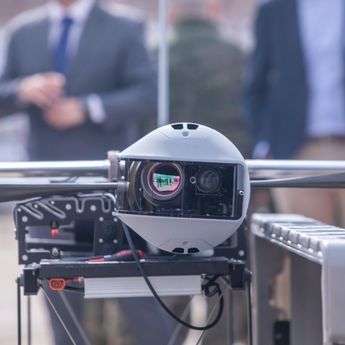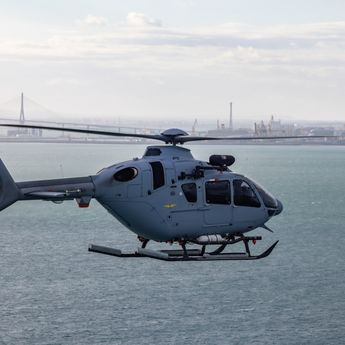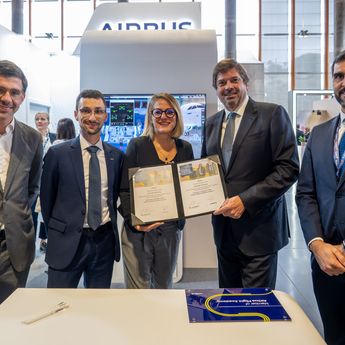High-level sport is much like high-tech industry, where innovation, precision and attention to detail play a key role. And Paralympic Fencing is no exception, as French Paralympic foil and sabre fencer Maxime Valet well knows.
Now 35, Maxime Valet has been fencing for 25 years – first when he was able-bodied and then with a wheelchair, following an accident 15 years ago. A double bronze medallist at the 2016 Paralympic Games in Rio, Maxime came to an obvious conclusion. With his average build, if he wanted to maintain his chances of success in the face of ever-steeper competition, then he needed to find a way to extend his reach when delivering an attack.
The wheelchair plays a key role in this discipline, as Maxime explains: “We are all constantly seeking technical improvements that could give us the competitive edge. I’m quicker and more technical than many of my opponents but have less of a reach than some. So I tried to work out ways of extending my lunge.”
Having an idea is one thing, putting it into action is another. Which is where Airbus came in. Contacted via the company’s disability service Mission Handicap, the challenge was quickly seized by Airbus’ Humanity Lab – a philanthropic-minded network of Airbus volunteers who contribute to innovative projects with a positive impact on society. It wasn’t unknown territory, since the Lab had already worked on a wheelchair for France national Para-Badminton team member David Toupé,
Several employees volunteered to dedicate some of their free time to the project, as its coordinator and R&T Innovation Catalyst Vanessa Crespo explains.
“The process took several months because we first took the time to watch Maxime in action, in order to fully understand what he required.”
Next came the study, design and development phases, from ergonomic analysis of the athlete’s movements to scans of his wheelchair. This information helped to create a 3D model featuring in particular the mapping of Maxime’s movements and the precise dimensions of his wheelchair.
“After discussing these elements with Maxime, together we agreed to equip his chair with a grip that would enable him to increase his range,” says Christophe Debard, Head of ProtoSpace Toulouse at Airbus. Digitally designed by the Airbus Design teams, the grip was produced then mounted on the chair so that Maxime could test it. “After two or three tryouts, he was able to start training in March 2020”, adds Vanessa.

What happened next proved them all right, as Maxime proudly explains. “We kept the grip a secret for a long time in order to create the effect of surprise and avoid it being copied, and it played a key role during several matches at the 2021 Games in Tokyo. It enabled me to win my third Paralympic medal: the Team Bronze.”
Currently in the qualification phase of the next Paralympics, to be held in Paris in 2024, Maxime is still hard at work, backed by both the Humanity Lab and France’s national sports agency the Agence Nationale du Sport – a public interest group created after Paris was awarded the 2024 Games, to help athletes, coaches and sports federations improve their daily performance.
So we’ll have to wait until next year to find out what new innovations this collaboration brings and whether they prove successful.

Latest News
Continue Reading
Satair to Acquire Unical Aviation, Boosting USM Capabilities
Press Release
Commercial Aircraft
Satair has entered into an agreement to acquire Unical Aviation Inc., a global aircraft parts and components supplier.
From Orbit to Flight Test: Thomas Pesquet Joins Airbus
Web Story
Commercial Aircraft

Spain takes off in the age of crewed-uncrewed teaming
Web Story
Helicopters

Twin-engine training with the Airbus H135
Web Story
Helicopters

Airbus Flight Academy and Sevenair partner to expand ab initio training offering
Press Release
Commercial Aircraft
